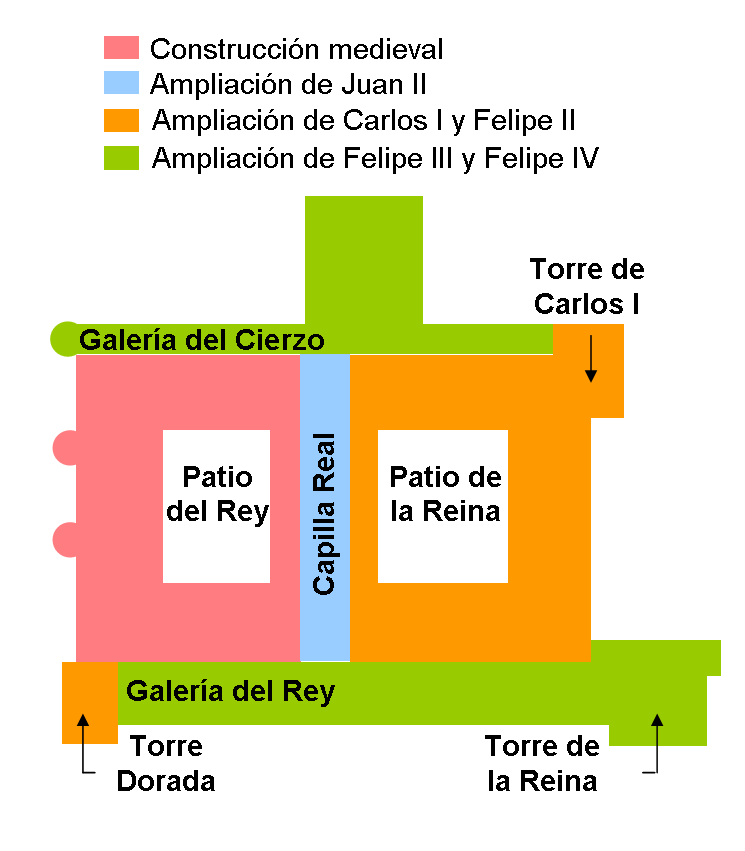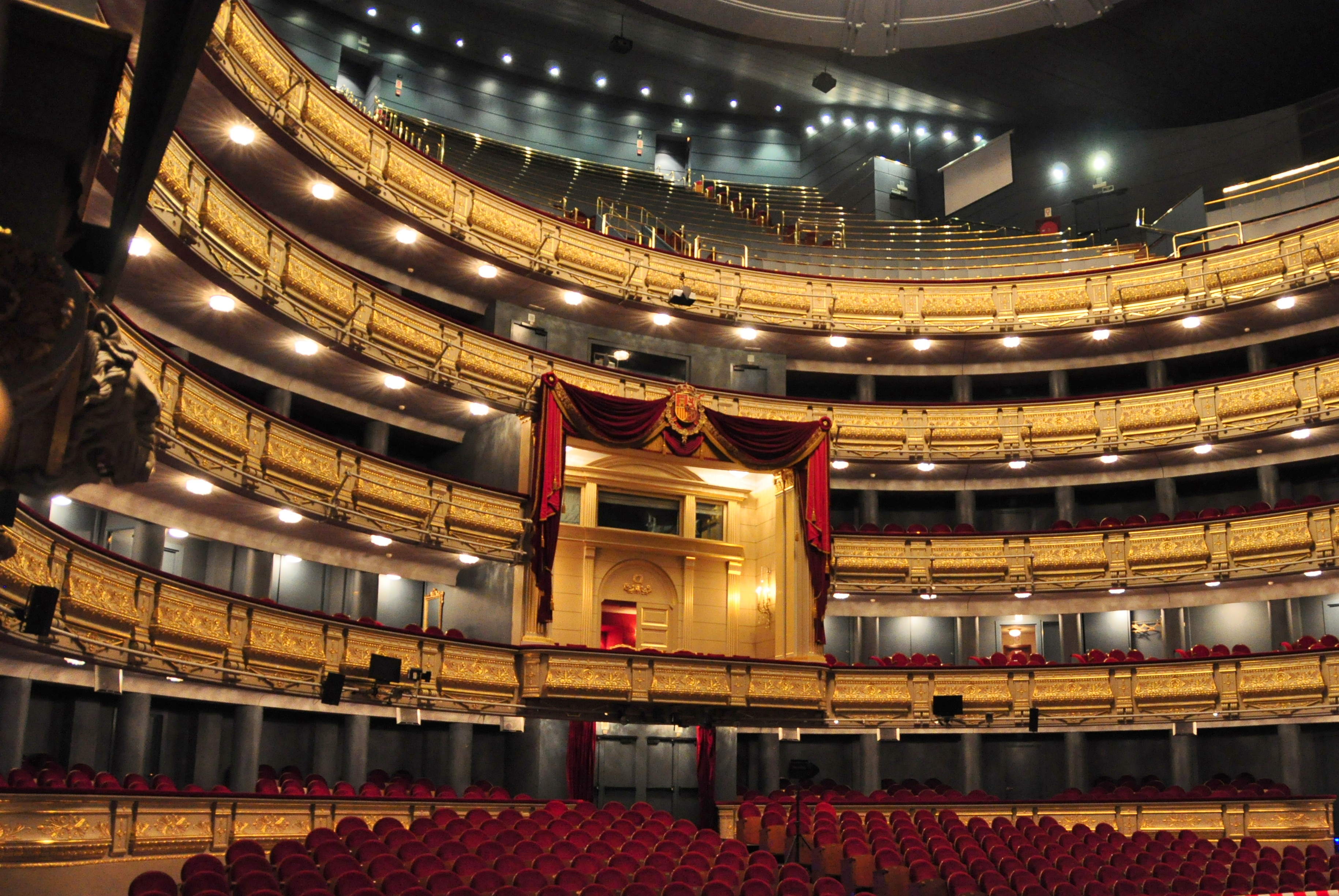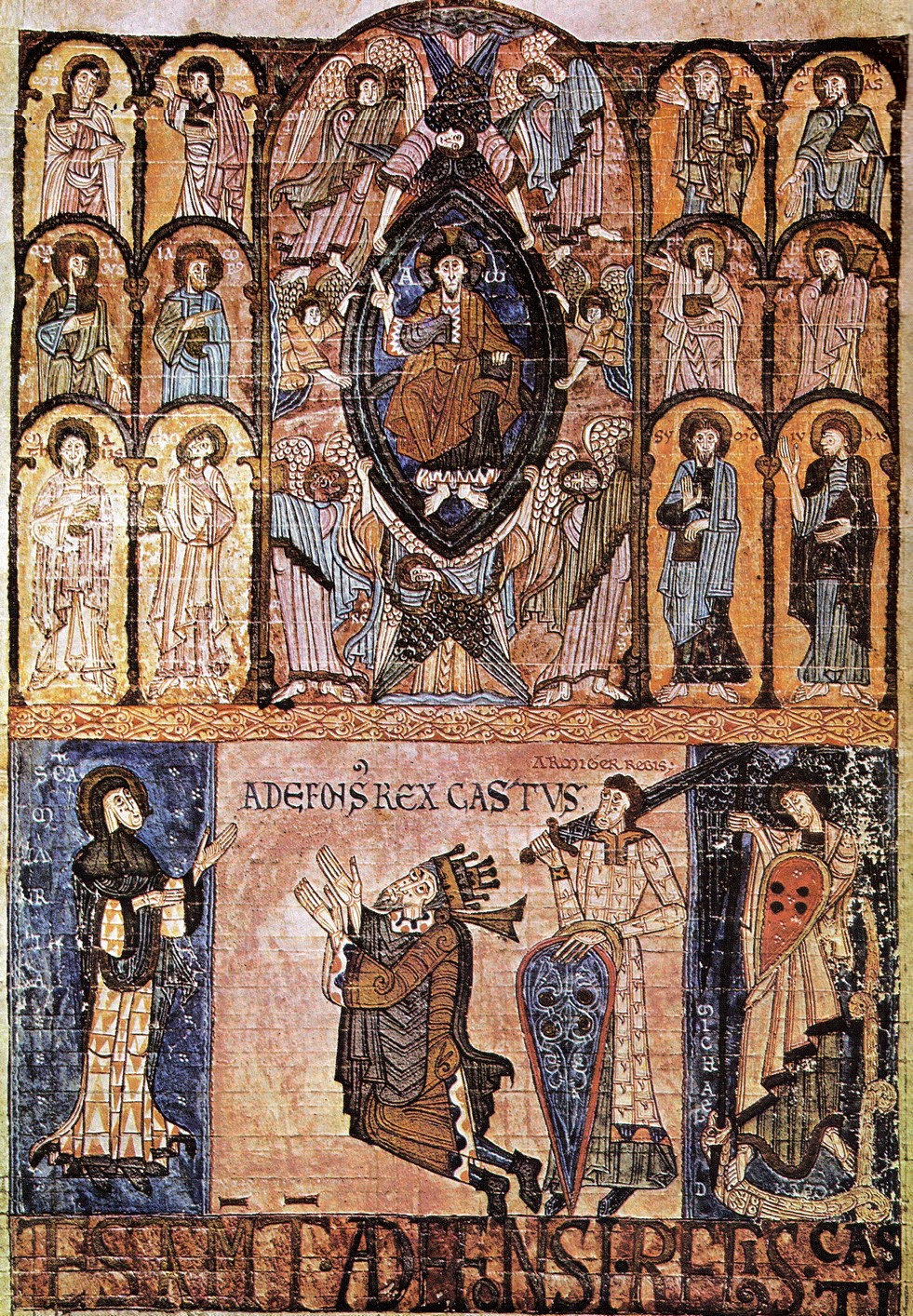|
Plaza De Oriente
The Plaza de Oriente is a square in the historic center of Madrid, Spain. Rectangular in shape and monumental in character, it was designed in 1844 by Narciso Pascual y Colomer. The square was propagated by King Joseph I, who ordered the demolition of the medieval houses on the site. It is located between some important landmarks in Madrid: To the west is the Royal Palace, the Teatro Real ("Royal Theater") to the east, and the Royal Monastery of the Incarnation to the north. The plaza has statues of 44 Spanish kings from the medieval period, including: * Alfonso I of Asturias * Alfonso II of Asturias * Euric Buildings around the square *Royal Palace of Madrid *Teatro Real *Royal Monastery of La Encarnación Monument to Philip IV At the heart of the Plaza de Oriente lies a monument dedicated to Philip IV of Spain Philip IV ( es, Felipe, pt, Filipe; 8 April 160517 September 1665), also called the Planet King (Spanish: ''Rey Planeta''), was King of Spain from 1621 to his ... [...More Info...] [...Related Items...] OR: [Wikipedia] [Google] [Baidu] |
Madrid
Madrid ( , ) is the capital and most populous city of Spain. The city has almost 3.4 million inhabitants and a metropolitan area population of approximately 6.7 million. It is the second-largest city in the European Union (EU), and its monocentric metropolitan area is the third-largest in the EU.United Nations Department of Economic and Social AffairWorld Urbanization Prospects (2007 revision), (United Nations, 2008), Table A.12. Data for 2007. The municipality covers geographical area. Madrid lies on the River Manzanares in the central part of the Iberian Peninsula. Capital city of both Spain (almost without interruption since 1561) and the surrounding autonomous community of Madrid (since 1983), it is also the political, economic and cultural centre of the country. The city is situated on an elevated plain about from the closest seaside location. The climate of Madrid features hot summers and cool winters. The Madrid urban agglomeration has the second-large ... [...More Info...] [...Related Items...] OR: [Wikipedia] [Google] [Baidu] |
Spain
, image_flag = Bandera de España.svg , image_coat = Escudo de España (mazonado).svg , national_motto = ''Plus ultra'' (Latin)(English: "Further Beyond") , national_anthem = (English: "Royal March") , image_map = , map_caption = , image_map2 = , capital = Madrid , coordinates = , largest_city = Madrid , languages_type = Official language , languages = Spanish language, Spanish , ethnic_groups = , ethnic_groups_year = , ethnic_groups_ref = , religion = , religion_ref = , religion_year = 2020 , demonym = , government_type = Unitary state, Unitary Parliamentary system, parliamentary constitutional monarchy , leader_title1 = Monarchy of Spain, Monarch , leader_name1 = Felipe VI , leader_title2 = Prime Minister of Spain ... [...More Info...] [...Related Items...] OR: [Wikipedia] [Google] [Baidu] |
Historic District
A historic district or heritage district is a section of a city which contains older buildings considered valuable for historical or architectural reasons. In some countries or jurisdictions, historic districts receive legal protection from certain types of development. Historic districts may or may not also be the center of the city. They may be coterminous with the commercial district, administrative district, or arts district, or separate from all of these. Historical districts are often parts of a larger urban setting, but they can also be parts or all of small towns, or a rural areas with historic agriculture-related properties, or even a physically disconnected series of related structures throughout the region. Much criticism has arisen of historic districts and the effect protective zoning and historic designation status laws have on the housing supply. When an area of a city is designated as part of a 'historic district', new housing development is artificially re ... [...More Info...] [...Related Items...] OR: [Wikipedia] [Google] [Baidu] |
Narciso Pascual Colomer
Narciso Pascual Colomer, also known as Narciso Pascual y Colomer, (1808 in Madrid – 15 June 1870 in Lisboa) was a Spanish architect. He was one of the most important of the reign of Isabella II, an exponent of the late Neoclassicism and historicist styles. He was a member of the Real Academia de Bellas Artes de San Fernando along with Enrique María Repullés and Ricardo Velázquez Bosco. The majority of his works were in Madrid, such as the Palacio de las Cortes (1843–1850). This building is the seat of the Congress of Deputies The Congress of Deputies ( es, link=no, Congreso de los Diputados, italic=unset) is the lower house of the Cortes Generales, Spain's legislative branch. The Congress meets in the Palace of the Parliament () in Madrid. It has 350 members elect .... References Spanish neoclassical architects 1808 births 1870 deaths People from Madrid 19th-century Spanish architects {{Spain-architect-stub ... [...More Info...] [...Related Items...] OR: [Wikipedia] [Google] [Baidu] |
Joseph I Of Spain
Joseph-Napoléon Bonaparte (born Giuseppe di Buonaparte, ; co, Ghjuseppe Nabulione Bonaparte; es, José Napoleón Bonaparte; 7 January 176828 July 1844) was a French statesman, lawyer, diplomat and older brother of Napoleon Bonaparte. During the Napoleonic Wars, the latter made him King of Naples (1806–1808), and then King of Spain (1808–1813). After the fall of Napoleon, Joseph styled himself ''Comte de Survilliers'' and emigrated to the United States, where he settled near Bordentown, New Jersey, on an estate overlooking the Delaware River not far from Philadelphia. Early years and personal life Joseph was born in 1768 to Carlo Buonaparte and Maria Letizia Ramolino at Corte, Haute-Corse, Corte, the capital of the Corsican Republic. In the year of his birth, French Conquest of Corsica, Corsica was invaded by France and conquered the following year. His father was originally a follower of the Corsican patriot leader Pasquale Paoli, but later became a supporter of French rule ... [...More Info...] [...Related Items...] OR: [Wikipedia] [Google] [Baidu] |
Royal Palace Of Madrid
The Royal Palace of Madrid ( es, Palacio Real de Madrid) is the official residence of the Spanish royal family at the city of Madrid, although now used only for state ceremonies. The palace has of floor space and contains 3,418 rooms. It is the largest royal palace in Europe. The palace is now open to the public, except during state functions, although it is so large that only a selection of rooms are on the visitor route at any one time, the route being changed every few months. An admission fee of €13 is charged; however, at some times it is free. The palace is owned by the Spanish state and administered by the Patrimonio Nacional, a public agency of the Ministry of the Presidency. The palace is on Calle de Bailén ("Bailén Street") in the western part of downtown Madrid, east of the Manzanares River, and is accessible from the Ópera metro station. Felipe VI and the royal family do not reside in the palace, choosing instead the Palace of Zarzuela in El Pardo. The palace ... [...More Info...] [...Related Items...] OR: [Wikipedia] [Google] [Baidu] |
Teatro Real
The Teatro Real (Royal Theatre) is an opera house in Madrid, Spain. Located at the Plaza de Oriente, opposite the Royal Palace of Madrid, Royal Palace, and known colloquially as ''El Real'', it is considered the top institution of the performing and musical arts in the country and one of the most prestigious opera houses in Europe. The groundbreaking of the Teatro Real was on 23 April 1818, under the reign of Ferdinand VII of Spain, King Ferdinand VII, and it was formally opened by his daughter Isabella II of Spain, Queen Isabella II on 19 November 1850. It closed in 1925 due to damage to the building and reopened on 13 October 1966 as a symphonic music venue. Beginning in 1991, it underwent major refurbishment and renovation works and finally reopened as an opera house on 11 October 1997 with a floor area of and a maximum capacity of 1,958 seats. Since 1995, the theatre is managed by a public foundation in whose Board of Trustees are represented the Ministry of Culture (Spain), ... [...More Info...] [...Related Items...] OR: [Wikipedia] [Google] [Baidu] |
Royal Monastery Of La Encarnación, Madrid
Royal may refer to: People * Royal (name), a list of people with either the surname or given name * A member of a royal family Places United States * Royal, Arkansas, an unincorporated community * Royal, Illinois, a village * Royal, Iowa, a city * Royal, Missouri, an unincorporated community * Royal, Nebraska, a village * Royal, Franklin County, North Carolina, an unincorporated area * Royal, Utah, a ghost town * Royal, West Virginia, an unincorporated community * Royal Gorge, on the Arkansas River in Colorado * Royal Township (other) Elsewhere * Mount Royal, a hill in Montreal, Canada * Royal Canal, Dublin, Ireland * Royal National Park, New South Wales, Australia Arts, entertainment, and media * ''Royal'' (Jesse Royal album), a 2021 reggae album * ''The Royal'', a British medical drama television series * ''The Royal Magazine'', a monthly British literary magazine published between 1898 and 1939 * ''Royal'' (Indian magazine), a men's lifestyle bimonthly * Royal Te ... [...More Info...] [...Related Items...] OR: [Wikipedia] [Google] [Baidu] |
Alfonso I Of Asturias
Alfonso I of Asturias, called the Catholic (''el Católico''), (c. 693 – 757) was the third King of Asturias, reigning from 739 to his death in 757. His reign saw an extension of the Christian domain of Asturias, reconquering Galicia and León. He succeeded his brother-in-law Favila, and was succeeded by his son, Fruela I. Alfonso's illegitimate son, Mauregatus, also became king, and his daughter Adosinda was consort to king Silo of Asturias. The dynasty started by Alfonso was known in contemporary Al-Andalus as the ''Astur-Leonese dynasty''. Biography As the son of Duke Peter of Cantabria, Alfonso held many lands in that region. He is said to have married Ermesinda, daughter of Pelagius, who founded Asturias after the Battle of Covadonga in which he reversed the Moorish conquest of the region. He succeeded Pelagius' son, his brother-in-law, Favila, on the throne after the latter's premature death. Whether Pelagius or Favila were ever considered kings in their own lif ... [...More Info...] [...Related Items...] OR: [Wikipedia] [Google] [Baidu] |
Alfonso II Of Asturias
Alfonso II of Asturias (842), nicknamed the Chaste ( es, el Casto), was the king of Asturias during two different periods: first in the year 783 and later from 791 until his death in 842. Upon his death, Nepotian, a family member of undetermined relation, attempted to usurp the crown in place of the future Ramiro I. During his reign, which covered a span of 51 years, Alfonso discovered the supposed tomb of St. James the Great (called in Spanish) in the town of Compostela, which later became known as the city of Santiago de Compostela. He was the son of Fruela I and Munia, a Basque woman captured and brought back to Asturias by the former following a military campaign. Early life He was born in Oviedo in 759 or 760. He was put under the guardianship of his aunt Adosinda after his father's death, but one tradition relates his being put in the Monastery of San Xulián de Samos. He was the governor of the palace during the reign of Adosinda's husband Silo. On Silo's dea ... [...More Info...] [...Related Items...] OR: [Wikipedia] [Google] [Baidu] |
Euric
Euric (Gothic: ''* Aiwareiks'', see ''Eric''), also known as Evaric, or Eurico in Spanish and Portuguese (c. 420 – 28 December 484), son of Theodoric I, ruled as king (''rex'') of the Visigoths, after murdering his brother, Theodoric II, from 466 until his death in 484. Sometimes he is called Euric II. Reign With his capital at Toulouse, Euric inherited a large portion of the Visigothic possessions in the Aquitaine region of Gaul, an area that had been under Visigothic control since 415. Over the decades the Visigoths had gradually expanded their holdings at the expense of the weak Roman government, including Euric's sieges of Clermont in 475 and 476, as well as advancing well into Hispania in the process. Upon becoming king, Euric defeated several other Visigothic kings and chieftains in a series of civil wars and soon became the first ruler of a truly unified Visigothic nation. Taking advantage of the Romans' problems, he extended Visigothic power in Hispania, driving the S ... [...More Info...] [...Related Items...] OR: [Wikipedia] [Google] [Baidu] |
Monumento A Felipe IV (Madrid) 11
{{disambiguation ...
Monumento may refer to: * ''Monumento'' (album), a 2008 album by Dakrya * Monumento, a district in Caloocan, Philippines where the Bonifacio Monument is located ** Monumento LRT Station See also ''Monumento'' means monument in Portuguese, Spanish, and Filipino. For relevant articles in Wikipedia see: * Monuments of Portugal * Monument (Spain) The current legislation regarding historical monuments in Spain dates from 1985. However, ''Monumentos nacionales'' (to use the original term) were first designated in the nineteenth century. It was a fairly broad category for national heritage sit ... [...More Info...] [...Related Items...] OR: [Wikipedia] [Google] [Baidu] |
_11.jpg)

_14.jpg)
.jpg)



